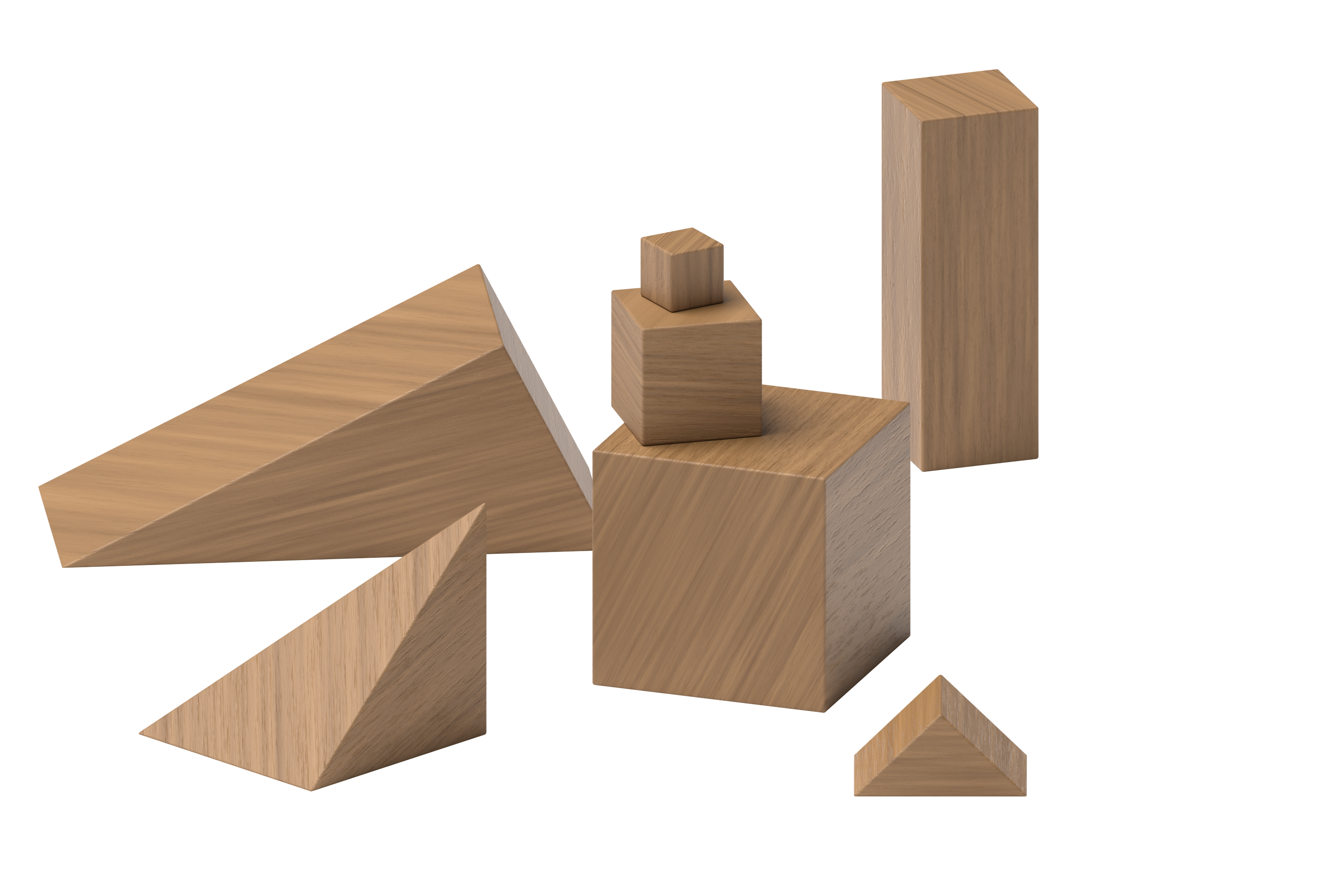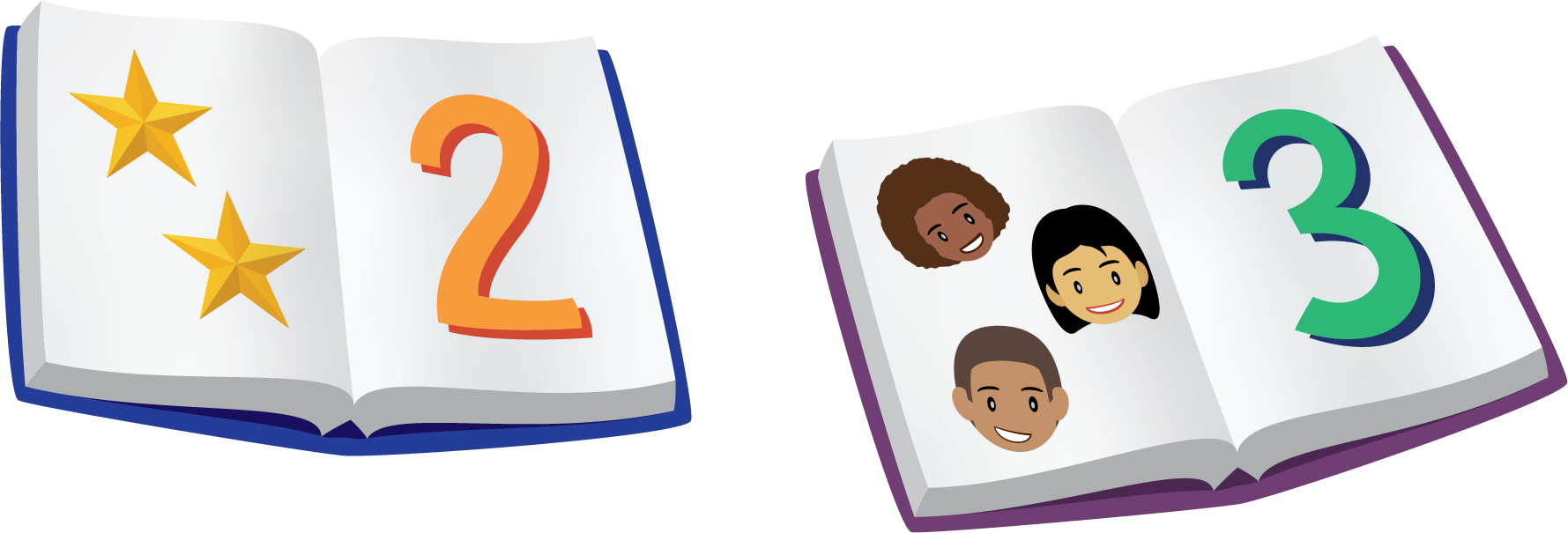Lesson 9
Create Picture Books
Warm-up: Act It Out: The Story Changes (10 minutes)
Narrative
The purpose of this activity is for students to consider different ways of acting out a story. Students revisit the story from previous lessons, which has another verse added to it. They suggest different ways the story could be acted out. Acting out gives students opportunities to make sense of a context (MP1).
Launch
- Groups of 2
- Display and read the story.
- “What is the story about?”
- 30 seconds: quiet think time
- Share responses.
- “What has changed about the story?” (There is a new part. Only 2 of the ducks came back.)
- Read the story again.
- “How can you act out this story?”
- 30 seconds: quiet think time
Activity
- “Discuss your thinking with your partner.”
- 1 minute: partner discussion
- Share responses.
Student Facing

3 little ducks went out one day,
over the hill and far away.
Mother duck said, “Quack, quack, quack.”
Then 3 little ducks came back.
3 little ducks went out one day,
over the hill and far away.
Mother duck said, “Quack, quack, quack.”
Then 2 little ducks came back.
Student Response
For access, consult one of our IM Certified Partners.
Activity Synthesis
- Read the story together.
- Act out the story as a class using a student suggestion. After acting out the first verse, reread the second verse and ask: “What will be different about how we act out the story this time?” (Only two of the ducks came back.)
Activity 1: How Many Do You See: What Do You Notice? (10 minutes)
Narrative
The purpose of this How Many Do You See is for students to recognize and name small groups of dots and describe how they see them. In the synthesis, students discuss what they notice about different images of 2 dots. Students will continue considering different arrangements of the same number in the next activity. The number “2” is displayed at the end of the activity to give students opportunities to recognize numbers and connect numbers and quantities.
Launch
- Groups of 2
- Display the first image.
- “How many dots do you see? How do you see them?”
- 30 seconds: quiet think time
Activity
- “Use your fingers to show your partner how many dots you see.”
- 30 seconds: partner work time
- “Tell your partner how many dots you see and how you see them.”
- 1 minute: partner discussion
- Record responses.
- Repeat with the second image.
Student Facing
How many do you see?
How do you see them?


Student Response
For access, consult one of our IM Certified Partners.
Activity Synthesis
- “What did you notice about the groups of dots?” (They both have 2 dots. They look different. They are the same but one is turned sideways.)
- Display or write “2”.
- “There are 2 dots.”
Activity 2: Introduce Picture Books, Create (10 minutes)
Narrative
The purpose of this activity is for students to learn stage 2 of the Picture Books center. In this activity, students identify and record small groups of objects in their classroom with the same quantity. Through recording groups of two objects and seeing the groups of two objects recorded by other students, students are invited to notice that many different groups of objects can have the same number.
Students create one page of a picture book, which is printed in their student workbook. Students have the opportunity to complete more pages in a picture book during centers. A blackline master of the picture book template is included. Each page of the picture book includes a written number in addition to dots so that students can begin to connect numbers and quantities.
Advances: Speaking, Representing
Supports accessibility for: Language, Visual-Spatial Processing
Required Materials
Materials to Gather
Materials to Copy
- Picture Books Stage 2 Recording Sheet
Launch
- Display the student book.
- Give students access to colored pencils or crayons.
- “What do you notice? What do you wonder?” (There are 2 dots. There is a number. The rest of the page is blank.)
- 30 seconds: quiet think time
- Share responses.
- “We have found groups of things in our classroom. We also matched groups that have the same number of things. Can you find something in our classroom that there are two of that you want to include in your picture book?”
- 30 seconds: quiet think time
Activity
- “You are going to make a page for a picture book like the ones we looked at earlier. There are two dots at the top of the page, so on this page you should draw things that there are two of in our classroom. ”
- 3 minutes: independent work time
- “Share your work with your partner. Did you both draw the same group of objects?”
- 30 seconds: quiet think time
- 2 minutes: partner discussion
- “Find other groups of 2 things in the classroom to add to this page in your picture book.”
- 3 minutes: independent work time
Student Facing


Student Response
For access, consult one of our IM Certified Partners.
Advancing Student Thinking
If students draw groups with more or fewer than 2 things, consider asking:
- “Can you tell me about this group of things that you drew? How many _____ are there?”
- “What things do you see that are in a group of 2?” If needed, identify some objects in the room and ask “Are there 2 _____?”
Activity Synthesis
- Invite students to share the groups of 2 that they drew.
- Record responses.
- “What is the same about all of these groups of things?” (We found them all in the classroom. They all have 2.)
- “You will be able to make more pages for your picture book in centers.”
Activity 3: Centers: Choice Time (25 minutes)
Narrative
The purpose of this activity is for students to choose from activities that focus on using math tools and recognizing quantities without counting.
Students choose from any stage of previously introduced centers.
- Connecting Cubes
- Pattern Blocks
- Geoblocks
- Picture Books
Required Materials
Materials to Gather
Required Preparation
- Gather materials from:
- Connecting Cubes, Stages 1 and 2
- Pattern Blocks, Stages 1 and 2
- Geoblocks, Stages 1 and 2
- Picture Books, Stages 1 and 2
Launch
- “Today you will work in centers with our math tools and picture books. During center time today one of the choices is to make another page for your picture book.”
- Display the center choices in the student book.
- “Think about what you would like to do first.”
- 30 seconds: quiet think time
Activity
- Invite students to work at the center of their choice.
- 10 minutes: center work time
- “Choose what you would like to do next.”
- 10 minutes: center work time
- While students work in centers, ask:
- “What did you do with the connecting cubes, pattern blocks, or geoblocks?”
- “What groups of things did you see in your book? How many things are there?”
- “What groups of objects did you draw in your picture book?”
- Monitor for students who draw clear groups of 1–4 objects for a new page in their picture book.
Student Facing
Choose a center.
Geoblocks

Connecting Cubes

Pattern Blocks

Picture Books

Activity Synthesis
- Invite previously selected students to share their picture book page. The lesson synthesis will focus on this page.
Lesson Synthesis
Lesson Synthesis
“Today we all made a page in our picture books with different groups of two things from around our classroom. Some of us created more pages for our picture books during center time.”
“What groups of objects do you see on _____’s page?”
“Let’s practice counting to 10.”
Demonstrate counting to 10. Count to 10 as a class 1–2 times.
Cool-down: Unit 1, Section B Checkpoint (0 minutes)
Cool-Down
For access, consult one of our IM Certified Partners.
Student Section Summary
Student Facing
In this section, we noticed math in our world.
We found groups of things in our classroom and in books.
We used our fingers and said numbers to tell how many things there are.


We found groups that have the same number of things.


There are 2 windows and 2 tables.


There are 3 stars and 3 soccer balls.
They look different but they are both 3.
We created our own books to show groups that have the same number of things in our classroom.
